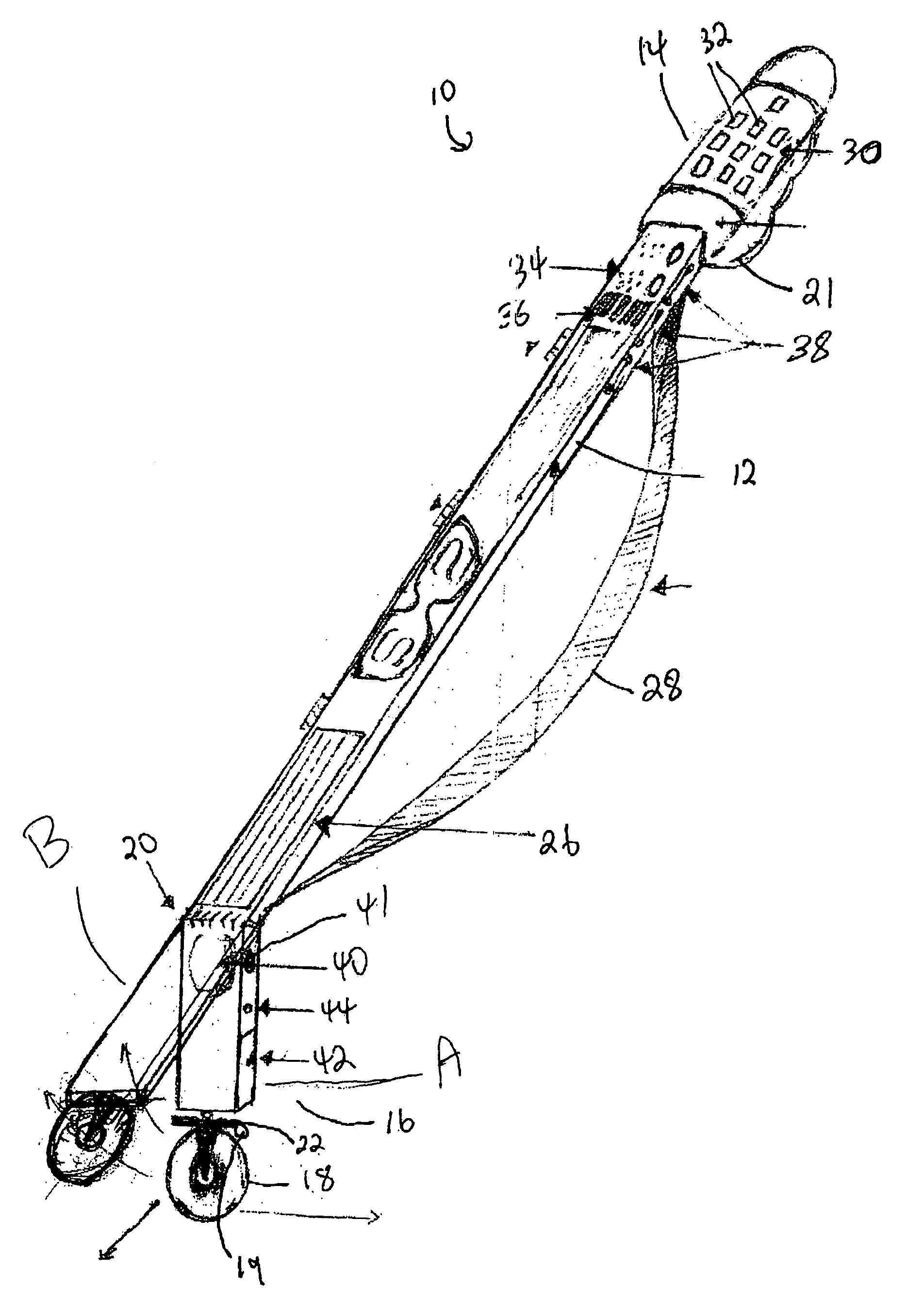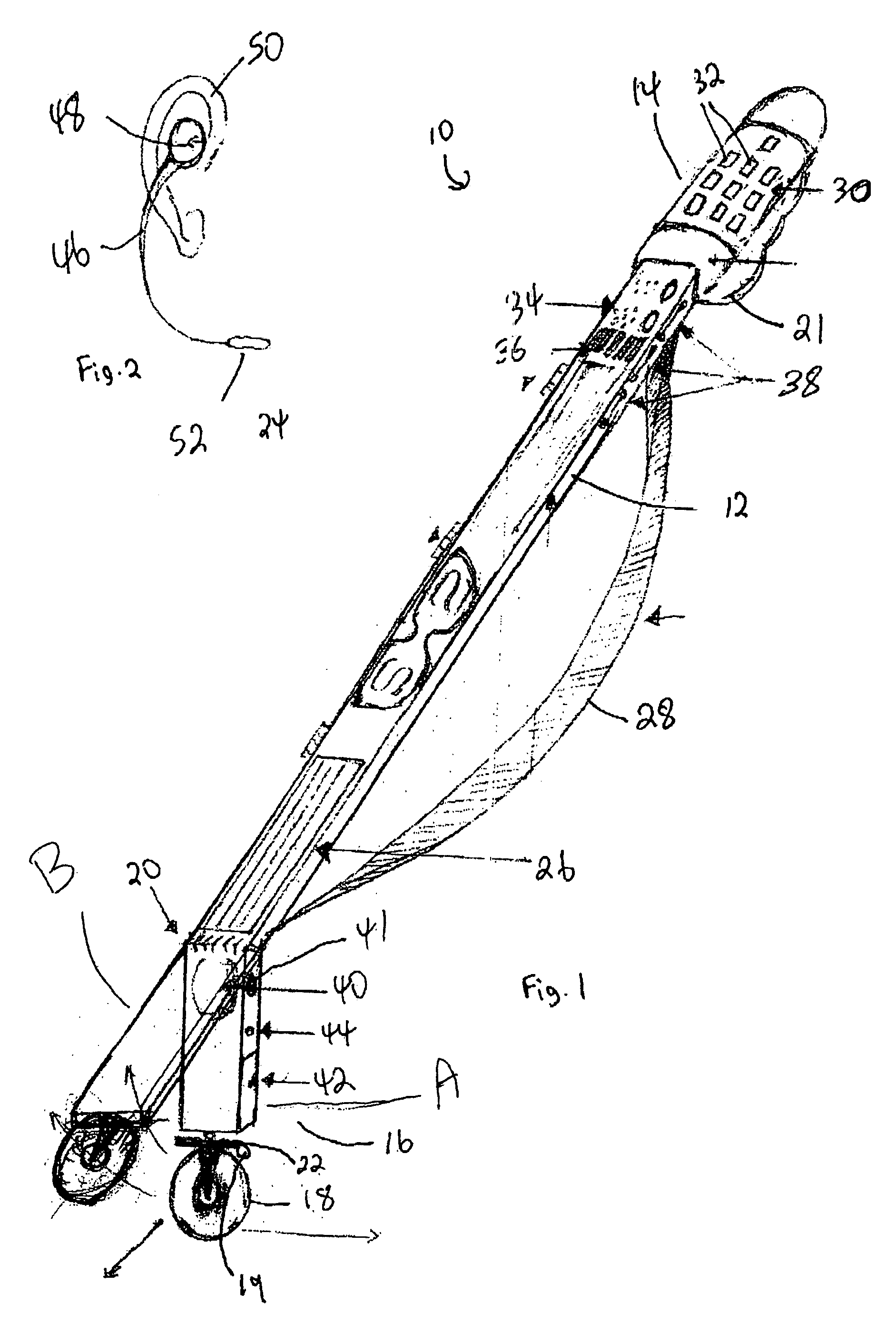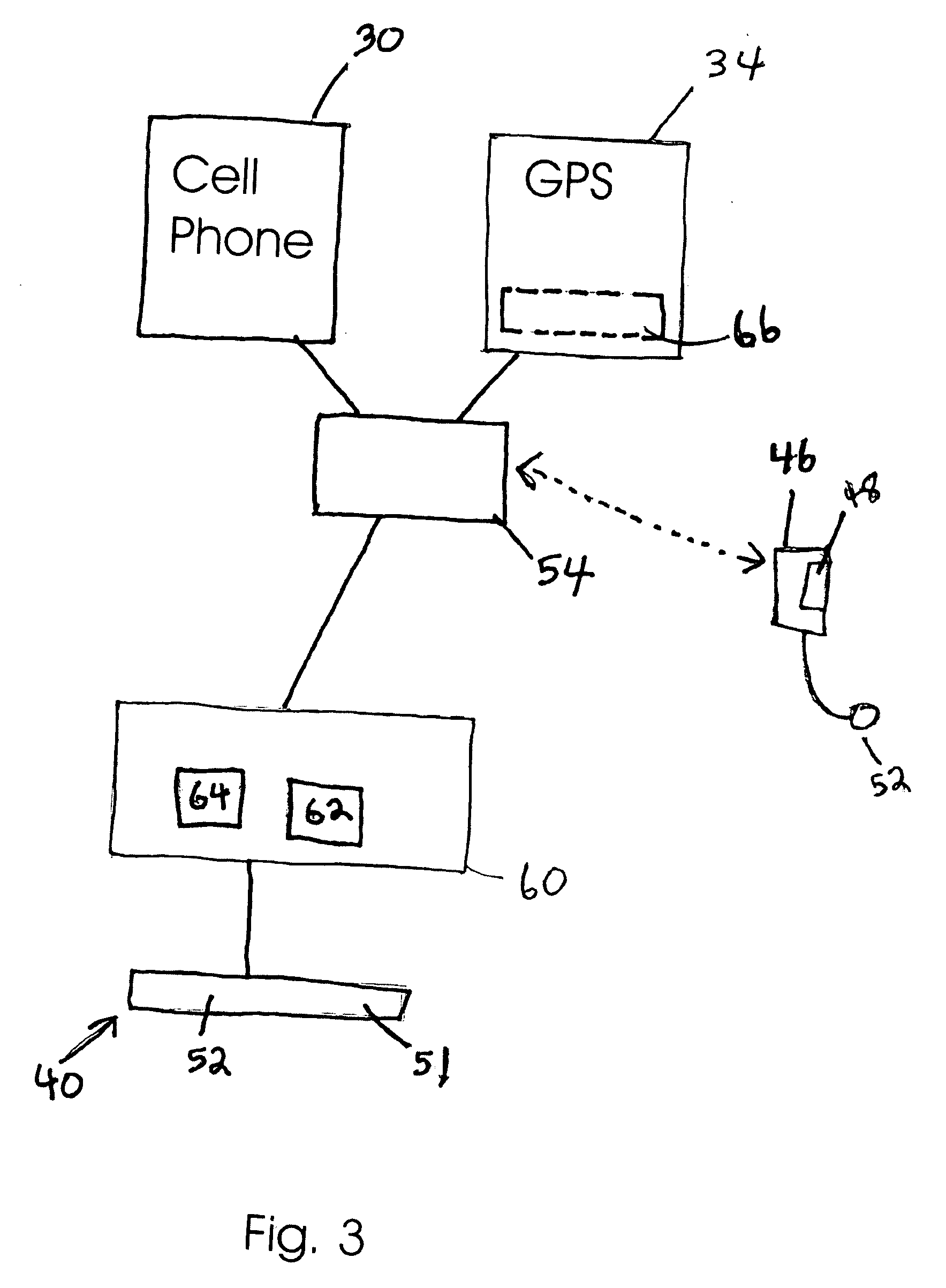Walking Aid for a Visually Disabled Person
a technology for visually disabled people and walking aids, which is applied in the field of walking aids for visually disabled people, can solve the problems of intimidation of most visually impaired people, difficulty in crossing streets, walking down crowded streets, and difficulty for visually disabled people to safely cross streets
- Summary
- Abstract
- Description
- Claims
- Application Information
AI Technical Summary
Benefits of technology
Problems solved by technology
Method used
Image
Examples
Embodiment Construction
[0011]Referring firstly to FIG. 1, a walking aid for use by a visually impaired or blind person made in accordance with the present invention is shown generally as item 10 and consists of an elongated shaft (housing) 12 having handle portion 14 and pivoting end portion 16. A swivelling wheel 18 is movably connected to pivoting end 16, which is in turn pivotally connected to shaft 12 via pivotal connection 20. Wheel 18 is movably connected to end 16 by means of swivel connector 22 such that the wheel can swivel around in any direction. Swivel connectors suitable for use as connector 22 are readily available on the market. Pivotal connector 20 is configured to permit end 16 to pivot between a lowered position as shown in FIG. 1 (item A) wherein end 16 is at an angle relative to shaft 12 and an extended position (item B) wherein end 16 and shaft 12 are coaxially aligned and straight. The device is provided with a lock mechanism (not shown) for locking the walking stick in either its an...
PUM
 Login to View More
Login to View More Abstract
Description
Claims
Application Information
 Login to View More
Login to View More - R&D
- Intellectual Property
- Life Sciences
- Materials
- Tech Scout
- Unparalleled Data Quality
- Higher Quality Content
- 60% Fewer Hallucinations
Browse by: Latest US Patents, China's latest patents, Technical Efficacy Thesaurus, Application Domain, Technology Topic, Popular Technical Reports.
© 2025 PatSnap. All rights reserved.Legal|Privacy policy|Modern Slavery Act Transparency Statement|Sitemap|About US| Contact US: help@patsnap.com



